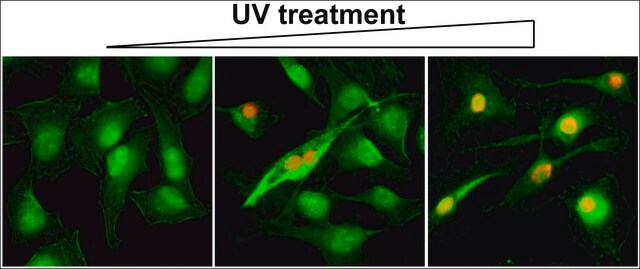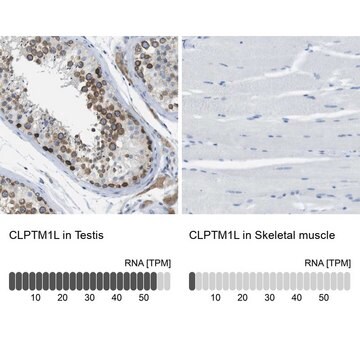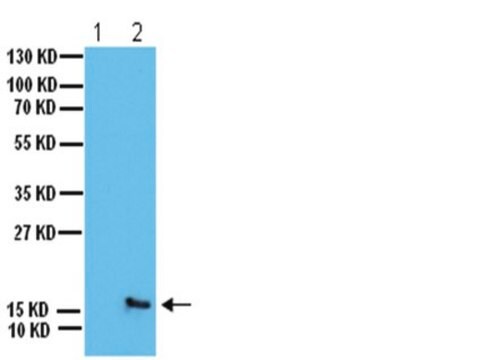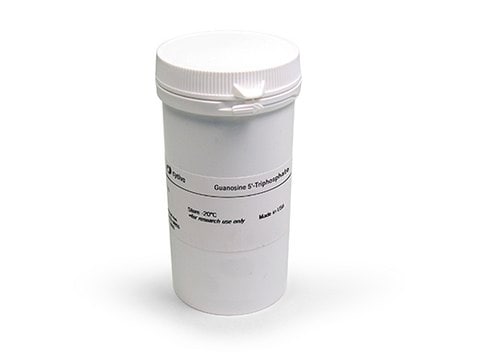MABE416
Anti-Cisplatin DNA Adducts Antibody, clone ICR4
clone 1CR4, from rat
Sinônimo(s):
CP9/19, Cisplatin DNA modification
About This Item
Produtos recomendados
fonte biológica
rat
Nível de qualidade
forma do anticorpo
purified antibody
tipo de produto de anticorpo
primary antibodies
clone
1CR4, monoclonal
reatividade de espécies
human
técnica(s)
ELISA: suitable
dot blot: suitable
immunohistochemistry: suitable
Isotipo
IgG2aκ
Condições de expedição
wet ice
modificação pós-traducional do alvo
unmodified
Descrição geral
Especificidade
Imunogênio
Aplicação
Immunohistochemistry Analysis: A representative lot from an independent laboratory detected Cisplatin DNA Adducts in Head and Neck Squamous Cell Carcinoma tissues. (Welters, M. J., et al. (1999). Ann Oncol. 10(1):97-103.).
Epigenetics & Nuclear Function
Chromatin Biology
Qualidade
Dot Blot Analysis: A 1:1,000 dilution of this antibody detected Cisplatin DNA Adducts in 1.0 and 0.5 µg of Cisplatin treated DNA from HeLa cell lysates.
forma física
Armazenamento e estabilidade
Outras notas
Exoneração de responsabilidade
Não está encontrando o produto certo?
Experimente o nosso Ferramenta de seleção de produtos.
Código de classe de armazenamento
12 - Non Combustible Liquids
Classe de risco de água (WGK)
WGK 1
Ponto de fulgor (°F)
Not applicable
Ponto de fulgor (°C)
Not applicable
Certificados de análise (COA)
Busque Certificados de análise (COA) digitando o Número do Lote do produto. Os números de lote e remessa podem ser encontrados no rótulo de um produto após a palavra “Lot” ou “Batch”.
Já possui este produto?
Encontre a documentação dos produtos que você adquiriu recentemente na biblioteca de documentos.
Nossa equipe de cientistas tem experiência em todas as áreas de pesquisa, incluindo Life Sciences, ciência de materiais, síntese química, cromatografia, química analítica e muitas outras.
Entre em contato com a assistência técnica







